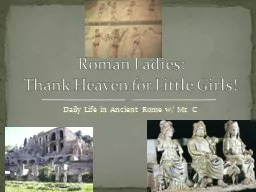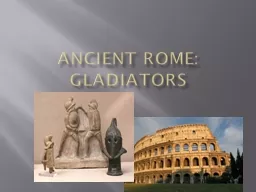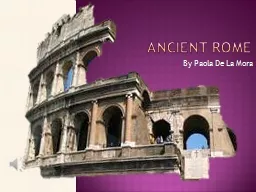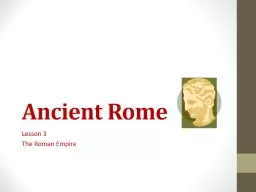PPT-Daily Life in Ancient Rome w/ Mr. C
Author : mitsue-stanley | Published Date : 2016-02-23
Roman Ladies Thank Heaven for Little Girls Food Bathrooms Religion 312 Women amp Marriage 326 MIDTERM EXAM 1 War 42 Spring Break Home Life 416 City Life 423
Presentation Embed Code
Download Presentation
Download Presentation The PPT/PDF document "Daily Life in Ancient Rome w/ Mr. C" is the property of its rightful owner. Permission is granted to download and print the materials on this website for personal, non-commercial use only, and to display it on your personal computer provided you do not modify the materials and that you retain all copyright notices contained in the materials. By downloading content from our website, you accept the terms of this agreement.
Daily Life in Ancient Rome w/ Mr. C: Transcript
Download Rules Of Document
"Daily Life in Ancient Rome w/ Mr. C"The content belongs to its owner. You may download and print it for personal use, without modification, and keep all copyright notices. By downloading, you agree to these terms.
Related Documents














